
Processed Foods: Types and Health Effects
March 15, 2023, 8:48 am
Processed foods is the ultimate economic goal of farming because it is where the farmer is able to extract the most value for crops and vegetables.
Processed Foods: Types and Health Effects
For example, in a study on Plantain Value Chain Mapping in Southwest Nigeria, researchers found the value added at producer level to be 33/kg with labour cost constituting the major component and representing 51.2%.
According to the study, different values are also added by the different actors in the plantain marketing chain. At farm-gate assembling level, value added accumulated to 18/kg, Market-Arena assemblers (14/kg), Wholesalers (36.5/kg) and Retailers(45/kg). They noted that higher value added at Retail level was attributed to the fact that the Retail sells in units leading to higher value being added by the actor. Value added at the level of plantain chip processing was estimated at 107.3/kg and plantain flour was estimated at 114.6/kg with average value added of 111/kg at processing level.
The above applies to all crops, fruits and vegetables and it clearly shows that the best position to be in the food value chain is at the processing point. However, excessively processing food can cause health issues.
What is Processed Foods?
Processed foods are crops, fruits and vegetables that are no longer in their natural state as harvested from the farm. They have been altered from their natural state by actions or activities meant to improve them in order to achieve certain objectives such as increase shelf-life, improve their taste, make them more attractive etc.
Types of Processed Foods
The NOVA classification system groups all foods according to the nature, extent and purposes of the industrial processes they undergo. These involve physical, biological and chemical techniques used after foods are separated from nature, and before they are consumed or else made into dishes and meals.
Some foods may be consumed by themselves (examples are fruit, nuts, and milk). Others are usually consumed as all or part of prepared dishes and meals (examples are grains, vegetables, meat, and eggs). Others are food products used in making dishes and meals (examples are oils, butter, sugar, and salt). Or else they are food products manufactured so as to be ready to eat, drink or heat (examples are breads, cheeses, ham, packaged snacks, soft drinks, and pre-prepared dishes).
NOVA classifies all foods and food products into four groups and they are stated below:
GROUP 1: Unprocessed and Minimally Processed Foods
Unprocessed (or natural) foods are the edible parts of plants (such as fruit, leaves, stems, seeds, roots) or from animals (such as muscle, offal, eggs, milk), and also fungi, algae and water, after separation from nature.
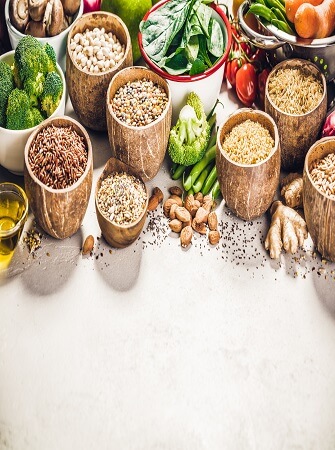
Minimally processed foods are natural foods altered by methods that include removal of inedible or unwanted parts, and also processes that include drying, crushing, grinding, powdering, fractioning, filtering, roasting, boiling, non-alcoholic fermentation, pasteurization, chilling, freezing, placing in containers, and vacuum packaging. The distinction between unprocessed and minimally processed foods is not especially significant.
These methods and processes are designed to preserve natural foods, to make them suitable for storage, or else to make them safe or edible or more pleasant to consume. Many unprocessed or minimally processed foods are prepared and cooked as dishes or meals in kitchens at home or in restaurants or canteens in combination with processed culinary ingredients and sometimes with some processed foods.
Unprocessed and minimally processed foods vary in energy density and in their content and balance of fats, carbohydrates, proteins, and their fractions, and in vitamins, minerals and other bioactive compounds. No single type of food can provide human beings with all necessary energy and essential nutrients in adequate balance, except for breastmilk in the first six months of life.
Thus in general, animal foods are good sources of various amino acids, vitamins and minerals, but contain little or no dietary fibre. Quite often they are energy-dense and high in unhealthy types of fat. Plant foods are usually low in energy density and good sources of dietary fibre. Many are high in various micronutrients and bioactive compounds, and some are good sources of amino acids.
This is why the human species has evolved as omnivorous. It explains why a great variety of traditional and long established food systems have been developed that have in common, the combination of plant foods with complementary nutrient profiles, such as grains (cereals) with legumes (pulses), or roots with legumes, or grains with vegetables, and usually with modest amounts of animal foods.
In appropriate variety and combinations, all foods in this group are the basis for healthy diets
GROUP 2: Processed Culinary Ingredients
Processed culinary ingredients include oils, butter, lard, sugar and salt. These are substances derived from group 1 foods or else from nature by processes such as pressing, refining, grinding, milling, and drying. Some methods used to make processed culinary ingredients are originally ancient. But now they usually are industrial products, designed to make durable products suitable for use in home, restaurant and canteen kitchens to prepare, season and cook freshly prepared dishes and meals.

In isolation, processed culinary ingredients are unbalanced, being depleted in some or most nutrients. Other than salt, they are also energy-dense, at 400 or 900 kilocalories per 100 grams. This is around 3-6 times more than cooked grains and around 10-20 times more than cooked vegetables.
But the key point here is that they are rarely if ever consumed by themselves. They are used in combination with foods to make palatable, diverse, nourishing and enjoyable meals and dishes such as stews, soups and broths, salads, breads, preserves, drinks, and desserts. Thus, oils are used in the cooking of grains (cereals), vegetables and legumes (pulses), and meat, and are added to salads. Table sugar is used to prepare fruit- or milk-based desserts. It is misleading to assess their nutritional significance in isolation. They should always be assessed in combination with foods.
Many culinary ingredients are cheap, and can be over-used. When used carefully and in small amounts, they result in delicious dishes and meals that are nutritionally balanced, with energy densities much lower than those of most ready-to-consume food products
GROUP 3: Processed Foods
These include canned or bottled vegetables or legumes (pulses) preserved in brine; whole fruit preserved in syrup; tinned fish preserved in oil; some types of processed animal foods such as ham, bacon, pastrami, and smoked fish; most freshly baked breads; and simple cheeses to which salt is added.
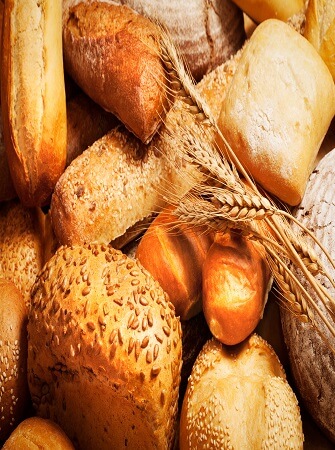
They are made by adding salt, oil, sugar or other substances from group 2 to group 1 foods. Processes include various preservation or cooking methods, and with breads and cheeses non-alcoholic fermentation.
Processing here increases the durability of group 1 foods, or modifies or enhances their sensory qualities. Most processed foods have two or three ingredients, and are recognizable as modified versions of group 1 foods. They are generally produced to be consumed as part of meals or dishes, and also may be consumed by themselves as snacks. Most are highly palatable.
As with culinary ingredients, some methods used to make processed food products are originally ancient, and can be and are still used domestically or artisanally. But now almost all are manufactured industrially. Processes include canning and bottling using oils, sugars or salt; and methods of preservation such as salting, salt-pickling, smoking, and curing.
The ingredients infiltrate the foods and so the processes alter their nature. Processed food products usually retain the basic identity and most constituents of the original food. But when excessive oil, sugar or salt are added, they become nutritionally unbalanced. Except for canned vegetables, their energy density ranges from moderate (around 150-250 kilocalories per 100 grams for most processed meats), to high (around 300-400 kilocalories per 100 grams for most cheeses).
Like processed culinary ingredients, they can be over-used. When used sparingly, and in the case of processed meats also only occasionally, they also result in delicious dishes and meals that are nutritionally balanced, also with energy densities lower than those of most ready-to consume food products.
GROUP 4: Ultra-processed foods
Ultra-processed foods are formulations of ingredients, mostly of exclusive industrial use, typically created by series of industrial techniques and processes (hence ‘ultra-processed’). Some common ultra-processed products are carbonated soft drinks; sweet, fatty or salty packaged snacks; candies (confectionery); mass produced packaged breads and buns, cookies (biscuits), pastries, cakes and cake mixes; margarine and other spreads; sweetened breakfast ‘cereals’ and fruit yoghurt and ‘energy’ drinks; pre-prepared meat, cheese, pasta and pizza dishes; poultry and fish ‘nuggets’ and ‘sticks’; sausages, burgers, hot dogs and other reconstituted meat products; powdered and packaged ‘instant’ soups, noodles and desserts; baby formula; and many other types of product.

Processes enabling the manufacture of ultra-processed foods involve several steps and different industries. It starts with the fractioning of whole foods into substances including sugars, oils and fats, proteins, starches and fibre. These substances are often obtained from a few high-yield plant foods (such as corn, wheat, soya, cane or beet) and from puréeing or grinding animal carcasses, usually from intensive livestock farming.
Some of these substances are then submitted to hydrolysis, or hydrogenation, or other chemical modifications. Subsequent processes involve the assembly of unmodified and modified food substances with little if any whole food using industrial techniques such as extrusion, moulding and pre-frying. Colours, flavours, emulsifiers and other additives are frequently added to make the final product palatable or hyper-palatable. Sophisticated and attractive packaging is used, usually made of synthetic materials Sugar, oils and fats, and salt, used to make processed foods, are often ingredients of ultra-processed foods, commonly in combination.

Additives that prolong product duration, protect original properties, and prevent proliferation of micro-organisms may be used in both processed and ultra-processed foods, as well as in processed culinary ingredients, and, infrequently, in minimally processed foods. Ingredients characteristic of ultra-processed foods are either food substances of no or rare culinary use, or else classes of additives whose function is to make the final product sellable, palatable and often hyper-palatable.
Processes and ingredients used for the manufacture of ultra-processed foods are designed to create highly profitable products (low-cost ingredients, long shelf-life, powerfully branded). Their convenience (imperishable, ready-to-consume), hyper-palatability, and ownership by transnational corporations using pervasive advertising and promotion, give ultra-processed foods enormous market advantages. They are therefore liable to displace all other NOVA food groups, and to replace freshly made regular meals and dishes, with snacking anytime, anywhere.
Health Effect of Processed Foods
They have been many studies that have shown the association between the consumption of ultra-processed foods and the risk of various diet-related non-communicable diseases in adults and children. In this section, we will look at the common diseases associated with ultra-processed foods:
Obesity
The association between ultra-processed food exposures and obesity or obesity-related outcomes among adults was examined by the two ecological studies, by five national cross-sectional studies (Brazil, the US, France, Canada and the UK), and by three longitudinal studies (the SUN project study, the St. Louis Women’s Health Center study, and the ELSA cohort study). After adjustment for potential confounders, significant positive associations were shown in the two ecological studies, in four of the five national cross-sectional studies, and in the three cohort studies.

The NIH randomized controlled trial has confirmed the association between ultra-processed food exposure and obesity-related outcomes. It shows that when exposed to ad libitum ultra-processed diets (81.3 percent of total energy from ultra-processed foods) participants consumed on average 508 kcal more per day than when exposed to ad libitum diets with no ultra-processed foods, and that at the end of two-weeks participants increased 0.9 kg consuming the ultra-processed diet and decreased 0.9 kg consuming the non-ultra-processed diet.
The ultra-processed and the non-ultra-processed diets offered to participants were matched for total energy, energy density, macronutrients, sugar, sodium and fibre. Significant direct dose-response associations between the dietary share of ultra-processed foods and obesity after adjusting for potential confounders were found in still unpublished cross-sectional studies undertaken on representative samples of the adult population of Australia and of the UK.
Cardiovascular and Metabolic Diseases
Studies on the association between the intake of ultra-processed foods and cardiovascular, and metabolic diseases include one national cross-sectional study on metabolic syndrome undertaken in the US adult population, one longitudinal study on hypertension from the Navarra SUN cohort, and another longitudinal study on coronary heart diseases, cerebrovascular diseases and all cardiovascular diseases from the French NutriNet cohort.

After adjustment for potential confounders, the three studies found significant positive dose response associations between the dietary share of ultra-processed foods and all studied cardiovascular health outcomes. The associations found in the French NutriNet cohort remained significant after control for saturated fat, sodium and sugar intakes. One new longitudinal study from the NutriNet-Santé cohort, still unpublished, found significant direct dose-response associations between the dietary share of ultra-processed foods and the incidence of type 2 diabetes even with the control for saturated fat, sodium, sugar and fibre intakes.
Cancer
Dietary share of ultra-processed foods and incidence of cancer was examined in the French NutriNet-Santé study. After adjustment for potential confounders, significant direct associations were found for overall and breast cancer (but not for prostate and colorectal cancer). This association remained significant after control for total fat, sodium and carbohydrate intake.

Depression
Association between the intake of ultra-processed foods and the incidence of depression was examined in the French NutriNet-Santé study, and also the SUN Navarra cohort study. After adjustment for potential confounders, significant direct dose-response associations between the dietary share of ultra-processed foods and incidence of depression were shown in both studies. In the French study, the association remained significant after control for total fat, sodium, and carbohydrate intakes.

Gastrointestinal Disorders
The cross-sectional association between the intake of ultra-processed foods and gastrointestinal disorders was investigated in the French NutriNet-Santé study. After control for potential confounders, a direct dose-response association was found between the dietary share of ultra-processed foods and the risk of irritable bowel syndrome and functional dyspepsia.

Frailty
The longitudinal association between the intake of ultra-processed foods and incidence of the frailty syndrome (or presence of three or more of the following five phenotypic criteria: exhaustion after small efforts, muscle weakness, low physical activity, slow walking speed, and unintentional weight loss) was investigated in the Seniors-ENRICA cohort study. After control for potential confounders, a direct dose-response association was found between the dietary share of ultra-processed foods and the risk of frailty syndrome

Mortality
The association between the intake of ultra-processed foods and all-cause mortality was investigated by three cohort studies the NHANES III follow-up, the SUN project and the French NutriNet-Santé. After adjustment for potential confounders, the three studies all found significant direct dose-response associations between the dietary share of ultra-processed foods and death risk due to all causes.
Probably due to lack of statistical power, no significant association was found for disease-specific mortality including cardiovascular mortality (investigated by the NHANES III follow study and the SUN project study) and cancer mortality (investigated only by the SUN project study).
In sum, consistent evidence accumulated by studies with different design, undertaken in a great number of countries, shows that the displacement of non-ultra-processed by ultra-processed foods increases the risk of obesity and several other diet-related noncommunicable diseases, and also premature mortality.
CONCLUSIONS
Public policies and actions should be taken to protect long-established production, manufacture, distribution, sale and consumption of healthy food. This will involve systematic examination of the behavioural, social, cultural, economic, political and environmental purposes and effects of food systems and supplies and dietary patterns.
Public policies and actions designed to promote freshly prepared meals and to restrict and reduce manufacture and consumption of ultra-processed foods, can and should be in various ways similar to those recommended for achieving healthy eating outlined in the United Nations Framework for Action, Decade of Action on Nutrition and the UN Global Action Plan for the Prevention and Control of Non-communicable Diseases 2013–2020.
Other specific public policies and actions, to involve statutory including fiscal measures, should give special priority to the health of infants, children and adolescents, and to the support of cooperative, small and family farmers and producers of fresh foods. They should ensure that staple healthy foods are affordable by and available to all, when appropriate by fixed prices, and encourage and protect cultures and dietary patterns based on freshly prepared meals.
Source and References
Innovation Opportunities in Plantain Production in Nigeria by Adeolu Ayanwade, Fatunbi Oluwole and Mathew Ojo
Ultra-Processed Foods, Diet Quality and Health Using the NOVA Classification System by Carlos Augusto Monteiro et al
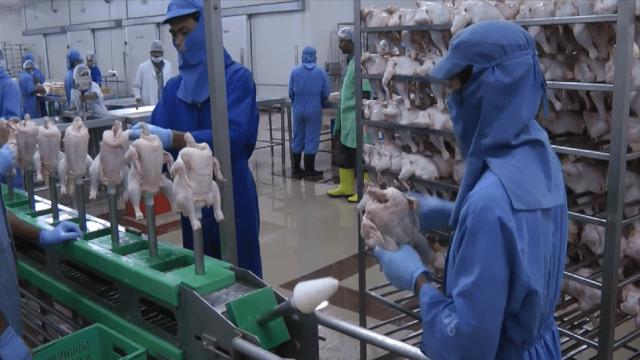

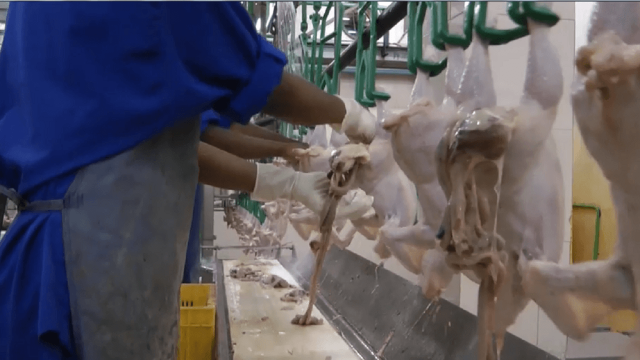
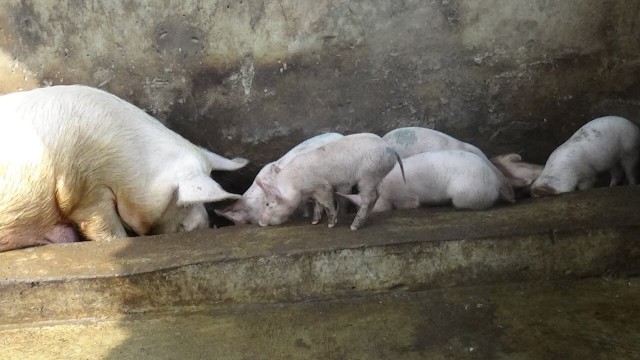




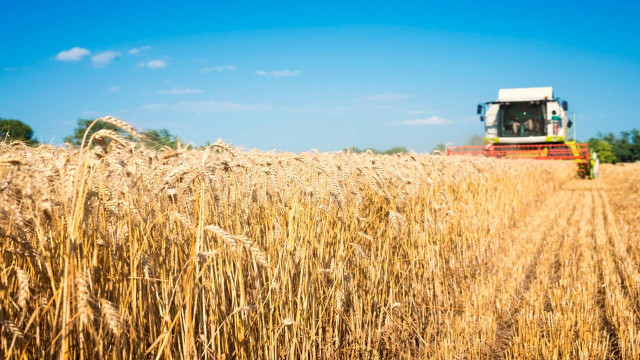



Share This Article: